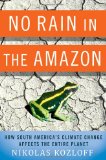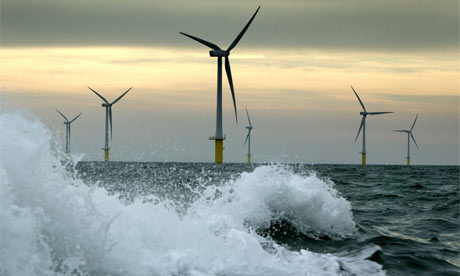
U.S. writer Nikolas Kozloff aims to give a voice to the peoples of the Global South in his new book No Rain in the Amazon. At the same time, as indicated by the sub-title How South America’s Climate Change Affects the Entire Planet, he warns that what happens in the Amazon affects us all, wherever we live.
In this book the South is mainly Peru and Brazil. For the purposes of the book Kozloff traveled throughout the two countries, speaking with government officials, experts, environmentalists, and indigenous peoples. A specialist in Latin American affairs, Kozloff is not a scientist but is well acquainted with current climate science.
He has a lot to tell as he develops his major themes. Among them: climate change is already being experienced in the region and taking effect on poorer people’s lives; it poses further threats for them in the future; the Amazon forests are threatened by climate change, particularly drought; they are also severely threatened by the deforestation caused by humans; loss of Amazon forest is global in its impact because of the vital part it plays in the global environment; the Global North is complicit in deforestation and must help stop it.
In Peru the melting of glaciers carries serious implications on many levels, from irrigation for farming and water for pack animals through to the long term threat to the water supply to Lima, a city of 7 million built on a desert. Unpredictable and testing weather patterns are emerging in some regions. The Andean cloud forests, which carry out a vital hydrological function as well as maintaining extraordinary biodiversity, are under threat from climatic change as clouds condense at higher altitudes. Kozloff considers the drastic effects of El Nino events on Peru, including outbreaks of cholera and dengue, and points to the IPCC expectation that El Nino-like conditions are expected to become more frequent with continued global warming.
Kozloff doesn’t constantly enter scientific caveats when assigning the effects of climate change on the lives of poorer people. It’s reasonable that he doesn’t: the cumulative picture is strong, and he’s not arguing the scientific case but giving a voice to people whose plight is being ignored. He comments on the extreme inequalities whereby, in general, the people who are most at risk from global warming live in the nations that have contributed the least to the atmospheric accumulation of carbon dioxide and other greenhouse gases. They also, like Peru, tend to be among the poorest and hence ill-equipped to deal with the changes they are facing.
Turning to the Amazon Kozloff points out that it contains about one-tenth of the total carbon stored in land eco-systems and recycles a large fraction of its rainfall. Drawing on the expertise of much-cited Brazilian scientist Philip Fearnside he explains how El Nino-driven drought is threatening the forest. The warming of sea surface temperatures in the tropical North Atlantic may also be linked to Amazonian droughts. Climate change is responsible for these enhanced threats. And of course the effects are not just local. Tropical rainforest literally drives world weather systems. The billions of dollars needing to be provided by the rich nations to tropical countries to sustain forests are an important and necessary insurance policy.
But the Amazon is threatened by more than climate change. Deforestation as a result of human activity is the focus of a major section of the book. Kozloff sets the scene for his survey by pointing out that the relentless slashing and burning of tropical forests is now second only to the energy sector globally as a source of greenhouse gases. Powerful political and economic forces within Brazil are pushing deforestation, but the Global North is complicit in the destruction. The affluent nations, acting through large financial institutions, fund destructive tropical industries and buy up the tropical commodities that are hastening the day of our climate reckoning.
The cattle industry accounts for 60 to 70 percent of deforestation in the Amazon. Kozloff recounts some of the brutal realities of ranching and its “insidious alliance” with politicians. Land ownership is often unclear and plagued by corruption. Poor workers can labour in conditions amounting to virtual slavery. An activist like Sister Dorothy Strang who worked on behalf of landless farmers and advocated for sustainable development projects was eventually simply assassinated. She was an “agitator” who had only herself to blame for her death, said a local cattle ranchers’ leader. The Brazilian state seems hopelessly compromised by powerful agricultural interests and finds it hard to police the Amazon and control deforestation. But financial institutions in the Global North, like the World Bank, provide key investment backing to the ranching explosion. Northern companies purchase leather, beef and other products and consumers buy them. Blame is shared.
The depressing news doesn’t end with cattle. Kozloff moves on to soy and its reach into the Amazon and the Brazilian cerrado, which covers one-fifth of the country and is the world’s most biologically rich savannah. Soy monoculture liberates carbon from the soil of the cerrado and its advance also displaces cattle farming into new forest development.
Kozloff acknowledges that there are problems with the Reducing Emissions From Deforestation and Forest Degradation progamme (REDD), not helped by the blocking by the US, Canada, Australia and New Zealand of moves to incorporate protections for indigenous peoples into the programme. But he sees it as “the only game in town right now that makes preserving forests more economically valuable than cutting them down”. Which is the nub of the matter.
Kozloff is not impressed by the “clean energy” initiatives being pursued in Brazil, hydro-electric dams for electricity and biofuels from sugar cane for transport. Apart from the population displacement and road building associated with dam-building, the dams in forest areas lead to vast emissions of methane from the decaying vegetation. Ethanol from sugar cane has been one of Brazil’s apparent success stories, but it involves destruction of the coastal Atlantic rainforest, one of the world’s top five biological hotspots. The nasty hell of debt-slavery operates in many sugar cane plantations. American agribusiness giants are now rushing to set up shop in Brazil to help greatly expand the industry. Much of the growth may be outside the rainforest, as officials claim, but it is planned to be within the cerrado.
If the Global North wants to avert yet further climate change, Kozloff says, it needs to get serious about the transfer of truly green technologies, particularly wind, solar, and waves. He points to the need for a “Manhattan Project” scale development of alternative clean energies, and the sharing of the new technologies with tropical nations such as Brazil. There’s little sign of such transfer taking place. Indeed before Copenhagen the US House of Representatives voted unanimously to ensure that the negotiations would not “weaken” US intellectual property rights on wind, solar, and other green technologies.
Full of interesting accounts though it is, the book is hardly a cheering read. Not because nothing can be done for Peru and Brazil by way of mitigation and adaptation but because it is by no means clear that the Global North is ready and willing to provide the necessary assistance. Nevertheless Kozloff presses the case for action convincingly.
Note: There’s a Democracy Now interview with Nikolas Kozloff relating to his book here on YouTube. (It’s in two parts.)
[Buy through: Fishpond,  Amazon.com, Book Depository.]
Amazon.com, Book Depository.]
Like this:
Like Loading...
 As a former English teacher I naturally take pleasure from the presence of literary people in the battle for action on climate change. Andy Revkin’s DotEarth blog drew my attention to one this week. He’s the Norwegian novelist Jostein Gaarder, the famed author of the novel Sophie’s World which since publication in 1995 has run to an extraordinary sales figure of 30 million copies worldwide, in 53 different languages. Taking a teenage girl through a discovery of the history of philosophy hardly seems the stuff of best-selling fiction, but it was in his case. And if you’re wondering what an author does with all that money, one of the uses it has been put to is the setting up of an annual US$100,000 international environment and development prize, the Sophie Prize. This year it has been awarded to climatologist James Hansen. “He receives the award for his clear communication of the threat posed by climate change and for his genuine commitment to future generations.”
As a former English teacher I naturally take pleasure from the presence of literary people in the battle for action on climate change. Andy Revkin’s DotEarth blog drew my attention to one this week. He’s the Norwegian novelist Jostein Gaarder, the famed author of the novel Sophie’s World which since publication in 1995 has run to an extraordinary sales figure of 30 million copies worldwide, in 53 different languages. Taking a teenage girl through a discovery of the history of philosophy hardly seems the stuff of best-selling fiction, but it was in his case. And if you’re wondering what an author does with all that money, one of the uses it has been put to is the setting up of an annual US$100,000 international environment and development prize, the Sophie Prize. This year it has been awarded to climatologist James Hansen. “He receives the award for his clear communication of the threat posed by climate change and for his genuine commitment to future generations.”

 Ben McNeil’s scenario, in
Ben McNeil’s scenario, in 